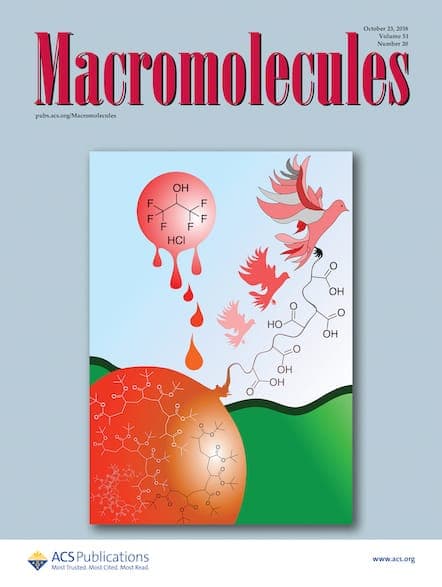Macromolecules recently held a webinar with Editor-in-Chief Marc A. Hillmyer and Associate Editors Arthi Jayaraman and Chinedum Osuji. The session addressed a number of questions that authors often have about submitting their work to the journal. Read on to learn the answers to these common questions. How are the reviewers chosen? Are the author suggestions […]

Macromolecules recently held a webinar with Editor-in-Chief Marc A. Hillmyer and Associate Editors Arthi Jayaraman and Chinedum Osuji. The session addressed a number of questions that authors often have about submitting their work to the journal.
Read on to learn the answers to these common questions.
We review the author recommendations for reviewers. It is good practice to provide the suggestions and justifications for your suggestions. There are many factors that go into our decision of which reviewers to choose. We use our best judgement and also availability of the reviewers to determine who is selected.
The decision to not send a paper for review is made very carefully. After reviewing the paper, we ask ourselves does this fit within in the scope of the journal, what is the significance, and what is the potential impact of the work; thus a manuscript that does not go out for external peer review, has also been reviewed by at least one editor at Macromolecules. We do our best to communicate our specific reasoning individually to the author for such a decision.
We only have two manuscript types: Articles and Perspectives. We chose a three-week allowed time for review to balance respect for the reviewers’ time and the author(s) desire for a speedy yet careful decision. We allow for longer review time in the case of Perspectives.
All Associate Editors at Macromolecules are practicing scientists in the fields in which they are associated with who bring their own expertise and understanding to the journal’s team. This enables them to make a judgement of substantive reviewer comments, even in case of conflicting reviewer comments. In some particularly difficult situations, it can be prudent to use an adjudicating reviewer to get another perspective.
ACS Publications has an array of open access options; ACS Central Science, ACS Omega, JACS Au, and the new suite of nine open access journals, ACS Au. ACS Polymers Au is part of this new group. We view this positively for giving authors more options for publishing their work, especially when funding agencies may mandate open access for publishing their research outcomes. We believe that this is a positive development and are committed to an ecosystem in which these journals exist and benefit from one another.
*Disclosure: Since the recording of this webinar, Arthi Jayaraman has joined ACS Polymer AU as the Deputy Editor.
It depends on how the story is communicated and if there is new science being presented. We want the content of the paper to be convincing and novel, and that brings out the fundamental science of polymers and pushes the field forward. There should be one or two significant points that will get elevated by the narrative for the reader to appreciate. The presence of additional data should not distract or detract from your main points. Also, consider using the supporting information in your manuscript wisely.
It can, but the more it leans on the biological emphasis, the better it may do in another ACS journal with that focus. At Macromolecules, our focus is on evaluating if the central point of the manuscript will advance fundamental polymer science.
This is an important point, especially during COVID-19. We at Macromolecules are taking a reasonable approach and want to be as helpful towards our authors as we can be. Editors are paying special attention to determining what information is necessary and what criticisms are reasonable towards a manuscript getting published in the journal.
Yes, they can. It does not happen too often, but the most frequent cases are manuscripts that come to us as a result of transfer from another ACS journal. These are often papers that may be out of scope at another journal but constitute a good fit for Macromolecules. Also transfers can come in with reviews received at the other journal and associated author responses, helping to reach a decision without having to send the manuscript out for another round of peer review.
This is a fine line to be balanced. The question to ask here is, “Is the point to advance fundamental polymer science?” The paper should provide a use to the polymer community.
We have an Editorial Advisory Board that includes several young researchers who have been invited to join the board and contribute their expertise. Macromolecules has not formally initiated an Early Career Board, but it is under consideration. It is an ongoing discussion about how best to engage our future researchers with the journal.
In case of any conflicts of interest, Editors recuse themselves from handling the manuscript. We are comprised of subject matter experts, and we each have our own knowledge. However even in cases where a submission maybe closely related to the Editor’s own work, we do the best we can to evaluate the papers on their own merits. We use a diversity of reviewers to provide us their individual assessments. This is the central tenet of what associate editors do. We agree that it is important that the science be evaluated on its merits and use our reviewers to lend their expertise and understanding.
Plagiarism is taken very seriously at Macromolecules. We use a program called CrossCheck by iThenticate to screen for overlapping content. Every revised manuscript from authors is evaluated by this program.
